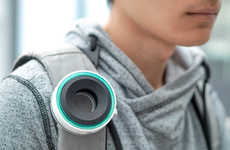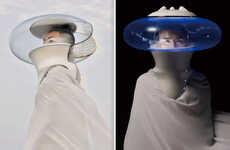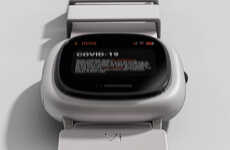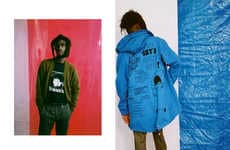
Eva Sonneveld Boasts a Chic Air Pollution Detector
References: evasonneveld.nl & design-milk
Designer Eva Sonneveld has potentially created one of the most innovative and fashionable air pollution detectors on the market. With her concept 'Survival Constructions,' she actively explores the changing landscape with an emphasis on a grim future that calls for "adapting [...] if we are to survive."
The project is launched in collaboration with Claudine Pieters from the Technical University in Eindhoven. The air pollution detector, which is essentially a knit sweater, utilizes innovative fabrication to alert the wearer when in the presence of the silent killer. The garment is dyed with a thermochromatic ink which gives it a color-changing property when in the presence of high pollution levels. In addition, Eva Sonneveld and her partner incorporate a chip into the construction to alert the wearer, as well as a knotted 50 meters of functional multipurpose survival rope.
The project is launched in collaboration with Claudine Pieters from the Technical University in Eindhoven. The air pollution detector, which is essentially a knit sweater, utilizes innovative fabrication to alert the wearer when in the presence of the silent killer. The garment is dyed with a thermochromatic ink which gives it a color-changing property when in the presence of high pollution levels. In addition, Eva Sonneveld and her partner incorporate a chip into the construction to alert the wearer, as well as a knotted 50 meters of functional multipurpose survival rope.
Trend Themes
1. Air Pollution-detecting Garments - Opportunity for creating innovative and fashionable garments that can detect air pollution levels and alert the wearer.
2. Thermochromatic Fabric Technology - The development of fabrics with color-changing properties in response to environmental factors, opening up possibilities for various applications.
3. Integration of Wearable Technology - The incorporation of chips and sensors into clothing to provide real-time alerts and data monitoring for the wearer.
Industry Implications
1. Fashion and Apparel - The fashion industry can explore the creation of pollution-detecting garments that merge style and functionality.
2. Textile Manufacturing - Manufacturers can leverage thermochromatic fabric technology to produce textiles with unique properties for various industries.
3. Wearable Technology - The wearable technology industry can further innovate by integrating sensors and chips into clothing for health and environmental monitoring.
6.3
Score
Popularity
Activity
Freshness























